#simplifie biography
Text
[Book Review] 🖋Agatha Cristie [Little People, Big Dreams]🖋
🧮 Score: 3.5/5.0
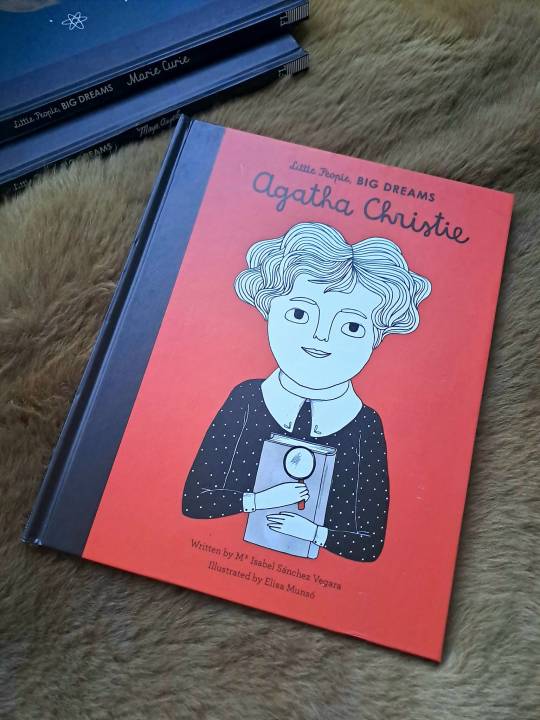
■ Emphasising the values of determination and creativity, this book provides a simplified version of the life of the Queen of Mystery; Agatha Christie. My personal favourite of her many books is “Peril at The End House”.
It is not only a biography but also an inspirational read. It encourages children to persevere and follow their dreams and believe in their abilities, inshaAllah, anyone can achieve greatness. An empowering quality to nurture.
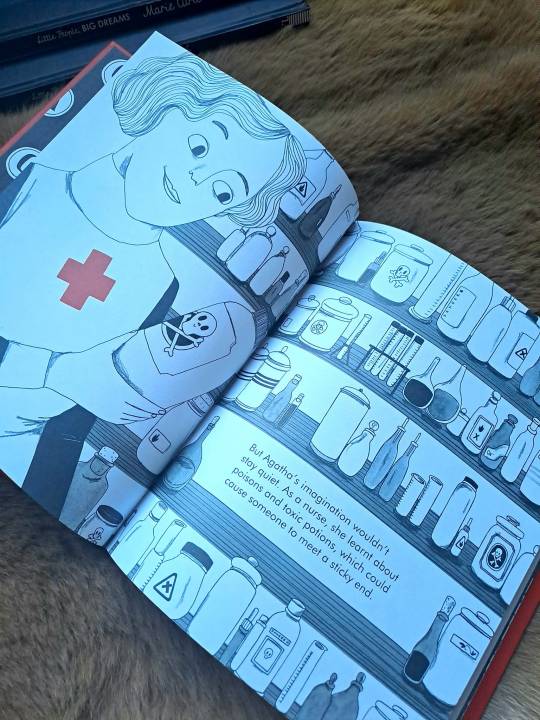
■ The illustrations are whimsical and colourful, adding a visual dimension that complements the storytelling. Starting with Agatha’s childhood and early influences, weaving through her passion for writing and her contributions to the world of literature. The narrative is presented simply and engagingly to children without sacrificing the essence.

■ The inclusion of real photographs of Agatha Christie at different stages of her life allows us to relate to the real person behind the legendary author.
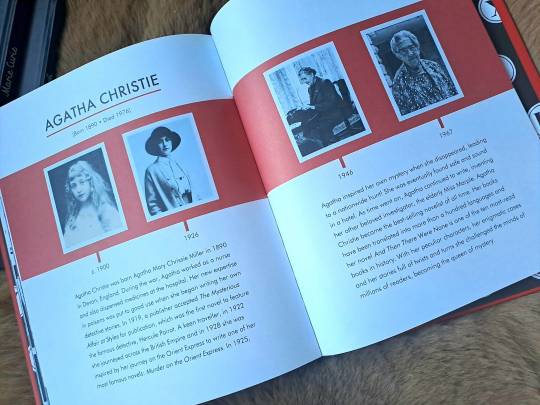
■ Overall, this is a captivating educational book that introduces young readers to the life of a literary icon. Perhaps, it serves as a fantastic starting point for nurturing an early interest in literature as well as knowing more about the remarkable life of Agatha Christie.
#book review#children book#little people big dreams#literary icon#Agatha Chritie#Inspirational#simplifie biography#bibliophile
1 note
·
View note
Text
This Week’s Amazon Featured Book of the Week is A Life Begins by Keith Harrison Walker
This Week’s Amazon Featured Book of the Week is A Life Begins by Keith Harrison Walker
Now available on Amazon!
…a life begins…by Keith Harrison WalkerPaperback $39.95; Hardback $49.95
This is a personal story of a boy from a small town in Illinois who manages to be the first person in his family to attend college (Northwestern), earn an officer’s commission in the Navy, go on to be a tv news reporter in Tucson, Arizona, become a film script writer, then public relations…

View On WordPress
#alifebegins#biography and autobiography#book marketing#editors#entertaining&performing#journalists#keithharrisonwalker#lgbtq+#market your self-published book#outskirts press#publishers#self publishing a book#self publishing simplified
1 note
·
View note
Text

The Making of: Life-Size Malworm Plush
(Wormton AU)
STATS
16 ft 3 in (495 cm) long
Total time: 150 hours
Material Cost: $124
Theoretical minimum cost (based on seamstress wage): $2,524
(Progress photos and commentary below)
I'll be referring to my life-size wormton plush as "malworm" for convenience sake.

Unlike my Spamton NEO, Caine, and Fake Peppino plushies, I didn't spend a lot of time on concept art. Since I planned to make the malworm plush as close as possible to its 2D design, I didn't have to add much stylization, other than simplifying some details (no way in hell was I going to make 104 separate embroidered stitches for the segments of his toes, sorry). I mainly used the planning stage to calculate how wide the body pieces needed to be, plotting it out in 1/4 in : 3 in scale and using circumference formula to find the values I needed. I planned to make it around 10 feet long, the length of a young adult malworm. A lot of this project was improv, but, I mean, it wasn't my first or second or third time making a spamton centipede.
The head was quite a complicated shape, so I carved a tiny model out of craft foam, covered one half of it in masking tape, then cut the masking tape mask (hah) into flat pieces. I then traced the pieces onto graph paper and manually scaled them up by using the fact that I wanted the nose to be 1 ft long as reference. The rest of the pattern pieces were very simple, as wormton's teeth, body, legs, etc were very easy to translate into 2D shapes. I used old school notes as paper for the body, as I needed a lot of it. It was entertaining cutting exerpts of Moby Dick and English Renaissance biographies into body parts. I ended up making the body significantly longer; I had to spend $100 dollars on fur anyways, so why not make a maximum size one?
Making the pattern pieces took around 8 hours. While waiting for the fur to ship, I started cutting out the teeth, legs, and eyes. By the time the fur arrived, I had already sewn 36 worm teeth. I did an 11hr all-nighter to cut all the fur in one sitting the day it arrived. After a long vacuuming session and an uptake in the amount of polyester fiber in my lungs, I finished cutting the pieces, taking about 18 hours and 40 minutes.

As usual, the head was the first thing I worked on. It was...kind of wonky once I flipped it inside out. I trimmed some of the fur so that I could actually see what was happening. The main issues were the lack of any forehead, the nose being way too wide, and the cheeks being too flat. I did some ladder stitching as well as modifying the thing from the inside, and eventually made the head look much better. The cheeks still don't stick out that much still, but I'm happy with how the head looks now. I think it conquered the sopping wet owl resemblance. I inserted wire into the nose and jaws to help them keep their shape.
When I started this project, I wasn't sure whether to make it based off of Wormton or just a copyright-free malworm; I decided to do both. I went with red for the non-Spamton version, as I think it really fits the cartoony fly/mothman-style cryptid look malworms are supposed to have.

I sewed a square pouch into the throat and put in all those teeth. I used hot glue to wrap blue squares around a wire for the proboscis, because I think I would've gone bonkers cuckoo bananas if I had to hand sew that entire thing. The throat pouch holds the proboscis when it's not extended, as well as anything else I wanted to shove in there. I never measured it, but it's around 4-5 ft long. I finally made the Spamton... eye patches(?) and a pair of eyelids, though I didn't end up using them in the photo shoot. I also made a new pair of nostrils, as the old ones kind of got swallowed up from all the plastic surgery I was giving him

Now that the head was finished, I got to work on the body. I sewed the white belly and segments of the body together. I left most of the tail open, as the fur was too thick for me to flip it out at a certain point. I worked on the legs, next. After living out my cosplay dreams by putting the claws on my fingers like bugles chips, I grouped the claws together and sewed most of each leg and foot together, leaving me with many pairs of charred drumsticks (did not taste good)
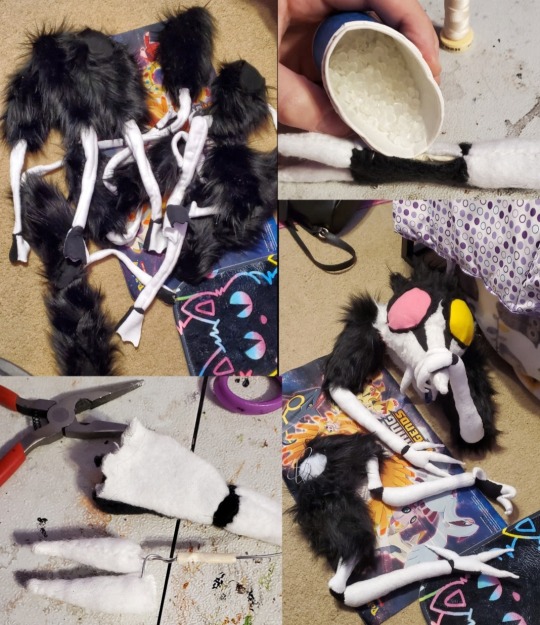
I attached an extra long wire structure into each set of claws, then threaded the wire through each respective leg and stuffed them. I ladder stitched the claws to each foot, then stuffed each with some plastic beans in order to give the feet weight. I then finished sewing each foot shut. I now had a pile of disembodied limbs and one very long scarf.
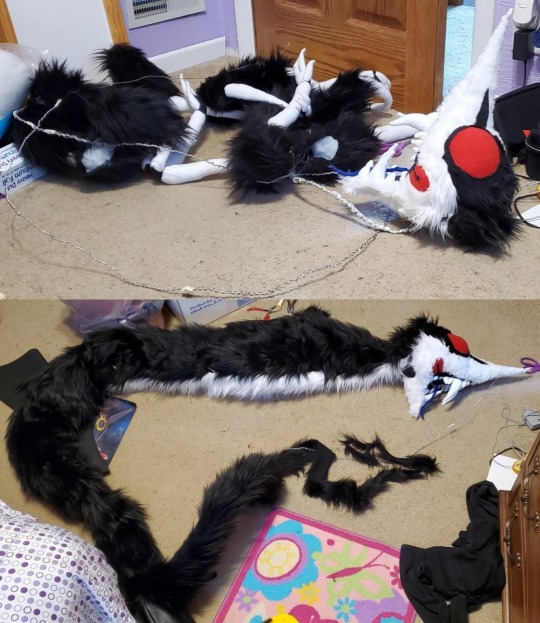
I wound many long pieces of wire together to create an armature for the body. While the plush's body is way too heavy to be properly posable, the wire does still give some structure. I wrapped the extra long ends of the legs' wires to the metal spine, using the body's leg holes for reference. I then pulled the body up the metal armature like a sock.

I pulled the legs through their respective holes and stuffed the body. It was the first time the malworm was huggable! It's sort of like an oversized body pillow, in a way. I had to ladder-stich all the limbs, the head, and the rest of the tail, as it would've been completely impossible to flip inside out. It was quite difficult to do on furry fabric, and my thread frequently broke from the force I had to pull with to keep the stitches tight. Eventually, I got everything attached to some degree.
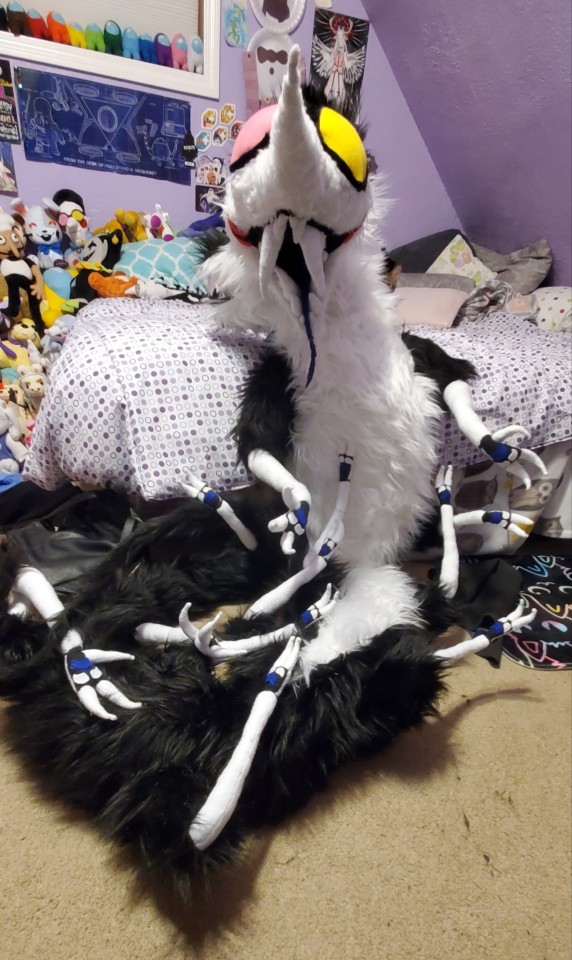
The last details I worked on were the mane, tail tufts, and scopula pads. The mane and tail tufts were ladder stitched onto the body, but I decided to use glue to attach the pads to the feet. I think the extra blue details make his proboscis fit much better, and who doesn't love spider paw pads? I also glued some velcro to the eye patches so that they stay attached better. They slide under the black eye rings.

My malworm was finally finished! I tried to put a lot of effort into the photo shoot so that people who don't know about the AU can enjoy it. I wanted to make it seem like some weird entity whose only goal is obtaining more Spamton brainrot. Hence it making Spamton on Mario Kart DS under the bed, obsessing over the Spamton Plush, inspecting the Spamton Shrine, and just generally harassing the photographer (me, I guess?). I wanted to capture the silliness, creepiness, and lack of respect for personal space that Spamton is known for. I thought about giving him a bag of doritos under the bed like that one image of the isopods eating them, but went with the DS instead. I thought it would be funny to see this thing playing Super Mario 64 DS (or Super Spamton 64) and here the "buh bye!" sound effect when it closes the DSi XL.
That's all from me, for now. I have other Wormton related matter to attend to.
Don't let the parasitic Spamton larvae bite
#wormton au#spamton#spamton fanart#deltarune#deltarune chapter 2#spamton g spamton#deltarune fanart#spamton deltarune#cheesycatz art posts#cheesycatz text posts#NOT FOR SALE you can't pry him from my cold dead hands
235 notes
·
View notes
Text
How to Write Political Intrigue (with book recs)
POLITICAL INTRIGUE! Intrigue in general! What is it?
For the purposes of this post (as well as how it's usually used in the writing/reading community), think: scheming. Plotting. Conspiracies in the shadows, bids for power and survival, secret plans, masterful illusions, all of that stuff.
It could be on any scale that you'd like, from a duel of wits (think Light's and L's game of cat and mouse in Death Note)
...to a large-scale plot involving entire countries and their people (like any espionage networks during any major wars, such as the American Revolutionary War to World War II, and so many more)
...or even medium-sized conflicts (families, like in The Godfather, or smaller national disturbances like the Watergate scandal).
Below are 4 core tips on how you can successfully write (political) intrigue plots:
1. Read + Research
Despite how hard it may sound, it's actually pretty easy to craft a realistic yet thrilling intrigue plot—with so many examples in real life and fiction, you can easily base your plot on an existing one and just change a few things like the characters, setting, and maybe a few plot points.
History and current events are always great places to look to, but here are some books that are chock-full of great politics + intrigue:
Leviathan (Thomas Hobbes): one of the most famous treatises of politics + human nature and their intersection. The book is an in-depth exploration of human nature, government, politics, and all of the root causes of why they exist. While it does take a specific philosophical angle (you might not agree with Hobbes' ideas), they are detailed explanations of how things work + why they are required from one perspective.
48 Laws of Power (Robert Greene): GREAT BOOK for helping you plan out the means by which you want the intrigue to happen. There are lots of simplified rules that tell you why people plan and scheme (e.g. "control the options; get others to play the cards you deal," or "pose as a friend, work as a spy"). There are LOTS of really great small stories of when a rule is applied in real life that are also general plot inspo!
The Godfather (Mario Puzo): very very good, intricate, and more emotional because it deals with the intrigue surrounding families
Joseph Fouché: Portrait of a Politician (Stefan Zweig) (biography): Fouché is absolutely insane. A genius at political intrigue. His life is literally one of the craziest stories of scheming, betrayals, survival, and a general vying for power, especially behind the scenes.
The Prince (Machiavelli): obviously, I can't leave out the original tips + tricks book with explanations of WHY intrigue matters as a means, especially in terms of protecting your power.
Trust Me, I'm Lying (Ryan Holladay): a large part of intrigue plots (you need to cover up the actual game you're playing) is the manipulation of information, creating illusions and spectacles for other people to believe. This book goes in-depth about media manipulation and information wars.
Empire of Pain (Patrick Raden Keefe): takes a rather different angle, through the personal/corporate manipulation of government, as well as how wealth dynasties (especially within families) are established. Remember the opioid crisis? This book explores the generational politics of money and power that led up to that.
Prince of Thorns (Mark Lawrence): Look! Fiction! Anyway, I'm biased because it's one of my favourite works of fiction of all time, but it explores political intrigue not only through an actor participating in it, but through the lens of the common folk. I.e., the consequences all that power play has on the populace due to a lack of actual good governance...
A Song of Ice and Fire (George R. R. Martin): I haven't personally read/watched anything GoT, but it's pretty much obligatory to put this series down in a post about political intrigue. It's famous for doing it well.
2. Plan. Like, meticulously
First of all, decide what scale you want your intrigue to be on: large-scale government/international affairs type, a corporation thing, something between two people, or even within a family? There are so many possibilities.
Intrigue plots are like mysteries; they must be tightly logical to be satisfying. One of the best ways of ensuring this is through analyzing each involved party—the actors.
Each actor has their own motivations, goals, and psychologies. After you establish what they want OUT of their intrigue, think about how they'd go about achieving it: a naturally hot-headed person might try to intimidate their way into getting what they want, or they might learn through the course of the story to cool down a bit.
A naturally imaginative and analytical person might come up with all sorts of scarily genius plans, and near-flawless execution. Of course, they would also react in different ways, depending on personality. Character consistency alone will make your plot seem that much more logical.
However, cracks in logic will happen because humans are inherently imperfect and not always rational. These cracks must be DELIBERATE and realistic and must seem planned out; they can't seem more like the author forgot a detail, or didn't know how to explain something (e.g. something happened and the writer never included the consequence of it because they forgot). It must be clear that it is a flaw on the character's part.
3. Never write intrigue for the sake of the intrigue
The incentive of all scheming comes down to mainly two things: gaining power and keeping it. Of course, you could choose to explore more unusual things, such as characters exercising intrigue to satisfy boredom... (think Light and Ryuk from Death Note).
But, the bids for power, security, and survival can be used to highlight things about human nature. Themes to explore include ambition, sacrifice, the pursuit of happiness, the corruption of character, the preservation of innocence in a cruel system, etc.
4. Explore through a narrow lens
Most intrigue plots are full of complex motivations, characters, goals, and the means they use to achieve said goals.
You should gradually let your intrigue plot unfold through the POV of a few characters, preferably one or two. An omniscient narrator for this type of story is INCREDIBLY difficult to pull off without confusing the reader.
However, more POVs work if you use all of them to focus on ONE or a few intrigue plots only—it can provide a multi-layered effect, exploring the same line of action and consequence through different perspectives. But, if everyone has their own intrigue plot, it's too easy to create a tangled mess where readers can barely delineate one plot from the next.
∘₊✧────── ☾☼☽ ──────✧₊∘
instagram: @ grace_should_write
Sorry for the massive hiatus—I have officially started college!! I've been pre-occupied with settling in, classes starting, a social life, extracurriculars etc. etc...life has been super busy, but great :)
I've started working on my books as well as poetry more recently, and I'm glad I'm getting into a new workflow/lifestyle. It certainly is different, but I'm starting to enjoy it.
Anyway, I'm surprised it took me this long to do a post about this topic, considering the fact that it's basically my writergram niche and my entire personality IRL, but I think it was mainly because I was trying to find a good angle to approach this massive topic. But, stay tuned for (probably) a part 2 because there's SO MUCH MORE to cover.
Hope this was helpful, and let me know if you have any questions by commenting, re-blogging, or DMing me on IG. Any and all engagement is appreciated :)
Happy writing, and have a great day!
- grace <3
#writers on tumblr#writing#booktok#writeblr#novel#writer#writerslife#wattpad#writing tips#writergram#wip#media analysis#book recommendations#bookstagram#plot holes#writing ideas#ya fantasy#fantasy#ya fiction#characters
216 notes
·
View notes
Photo

(via Everything You Never Wanted to Know About the Lobotomy)
Walter Freeman, the P.T. Barnum of the lobotomy, pioneered the transorbital lobotomy, a simplified procedure that didn’t even require an operating room; he eschewed the formality and sterility of operating rooms, and would just lobotomize patients anywhere. In fact, it’s so efficient, Freeman could finish a lobotomy in under 10 minutes. Fun fact: Freeman had no formal surgical training.
These instructions are taken from Walter Freeman’s Psychosurgery by way of Jack El-Hai’s excellent biography The Lobotomist. If you were to follow them, you would be guilty of multiple crimes and someone would probably die.
The supplies needed
An icepick
A small hammer
An electroconvulsive therapy machine
The procedure
To perform a lobotomy, Freeman would:
Sterilize his icepick. Usually. Sometimes he didn’t bother.
Administer shocks of high-enough voltage to induce unconsciousness with an electroconvulsive therapy machine. Sometimes Freeman did it with no anesthesia, however.
Slide the icepick beneath the victim’s upper eyelid, next to the tear duct, keeping the shaft parallel to the bony ridge of the nose and aimed slightly away from the center of the head.
The tip of the icepick would now be resting against the thinnest portion of the skull. Freeman would give a light tap with a hammer to break through the bone.
Now he would be able to easily push the icepick into the brain. Freeman advised going 5cm deep. Not too deep, or the “patient” would probably die.
Pull the handle of the icepick “as far laterally as the rim of the orbit will permit.” This should sever the fibers at the base of the frontal lobe. Hopefully.
According to Freeman, this step is the “ticklish part” because arteries are in reach. He would return the instrument to its previous position and drive it further to a depth of 7cm from the margin of the upper eyelid. Then move the ice pick 15 to 20 degrees medially and about 30 degrees laterally. If this was done wrong, the person would die. If done correctly, they’d only maybe die.
Withdraw the icepick with a twisting motion while applying pressure on the eyelid to prevent hemorrhage.
Resterilize the icepick.
Repeat with the other eye. A true showman, Freeman would sometimes do both sides at once.
The lobotomy is now complete!
this is HORRIFYING
#Walter Freeman#the P.T. Barnum of the lobotomy#simple quick and fucking deadly dangerous#I repeat this is HORRIFYING
455 notes
·
View notes
Text
2024 Book Review #27 – From the Ruins of Empire: The Revolt Against the West and the Remaking of Asia by Pankaj Mishra
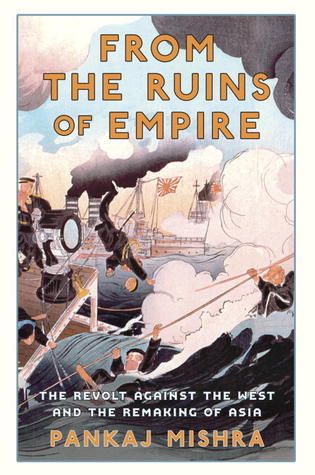
Yet another work of nonfiction I picked up because an intriguing-sounding quote from it went viral on tumblr. This was the fifth history book I’ve read this year, but the first that tries very consciously to be an intellectual history. Both an interesting and a frustrating read – my overall opinion went back and forth a few times both as I read and as I put together this review.
The book is ostensibly a history of Asia’s intellectual response to European empire’s sudden military and economic superiority and political imperialism in the 19th and 20th centuries, though it’s focus and sympathy is overwhelmingly with what it calls ‘middle ground’ responses (i.e. neither reactionary traditionalism nor unthinking westernization). It structures this as basically a series of biographies of notable intellectual figures from the Islamic World, China and India from throughout the mid-late 19th and early 20th centuries - Liang Qichao and Jamal al-Din al-Afghani get star bidding and by far the most focus, with Rabindranath Tagore a distant third and a whole scattering of more famous personages further below him.
The central thesis of the book is essentially that the initial response of most rich, ancient Asian societies to sudden European dominance (rung in by the Napoleonic occupation of Egypt and the British colonization of India) was denial, followed (once European guns and manufactured goods made this untenable) by a deep sense of inferiority and humiliation. This sense of inferiority often resulted in attempts by ruling elites and intellectuals to abandon their own traditions and westernize wholesale (the Ottoman Tanzimat reforms, the New Culture Movement in China, etc), but at the same time different intellectual currents responded to the crisis by synthesizing their own visions of modernity, and tried to construct a new world with a centre other than the West.
I will be honest, my first and most fundamental issue with this book is that I just wish it was something it wasn’t. Which is to say, it is a resolutely intellectual and idealist history, convinced of the power of ideas and rhetoric as the engine for changing the world. Which means that the biography of one itinerant revolutionary is exhaustively followed so as to trace the evolution of his world-historically important thoughts, but the reason the Tanzimat Reforms failed is just brushed aside as having something to do with europhile bureaucrats building opera houses in Istanbul. Not at all hyperbole to say I’d really rather it was actually the exact opposite – the latter is just a much more interesting subject!
Not that the biographies aren’t interesting! They very much are, and do an excellent job of getting across just how interconnected the non-Western (well, largely Islamic and to a lesser extent Sino-Pacific) world was in the early/mid-19th century, and even moreso how late 19th/early 20th century globalization was not at all solely a western affair. They’re also just fascinating in their own right, the personalities are larger than life and the archetype of the globe-trotting polyglot intelligentsia is one I’ve always found very compelling. While I complain about the lack of detail, the book does at least acknowledge the social and economic disruptions that even purely economic colonialism created, and the impoverishment that created the social base the book’s subjects would eventually try to arouse and organize. And, even if I wish they were all dug into in far more detail, the book’s narrative is absolutely full of fascinating anecdotes and episodes I want to read about in more detail now.
Which is a problem with the book that it’s probably fairer to hold against it – it’s ostensible subject matter could fill libraries, and so to fit what it wants to into a readable 400-page volume, it condenses, focuses, filters and simplifies to the point of myopia. Which, granted, is the stereotypical historian’s complaint about absolutely anything that generalizes beyond the level of an individual village or commune, but still.
This isn’t at all helped but the overriding sense that this was a book that started with the conclusion and then went back looking for evidence to support its thesis and create a narrative. Which is a shame, because the section on the post-war and post-decolonization world is by far the sloppiest and least convincing, in large part because you can feel the friction of the author trying to make their thesis fit around the obvious objections to it.
Which is to say, the book draws a line on the evolution of Asian thought through trying to westernize/industrialize/nationalize and compete with the west on it’s own terms (in the book’s view) a more authentic and healthy view that rejects the western ideals of materialism and nationalism into something more spiritual, humane, and cosmopolitan, with Gandhi kind of the exemplar of this kind of view. It tries to portray this anti-materialistic worldview as the ideology of the future, the natural belief system of Asia which Europe and America can hope to learn from. It then, ah, lets say struggles to to find practical evidence of this in modern politics or economics, lets say (the Islamic Republic of Iran and Edrogan’s Turkey being the closest). It is also very insistent that ‘westernization’ is a false god that can never work, which is an entirely reasonable viewpoint to defend but if you are then you really gotta remember that Japan/South Korea/Taiwan like, exist while going through all the more obvious failures. One is rather left feeling that Mishra is trying to speak an intellectual hegemony into existence, here. (The constant equivocation and discomfort when bringing up socialism – the materialistic western export par excellence, but also perhaps somewhat important in 20th century Asian intellectual life – also just got aggravating).
It’s somewhere between interesting and bleakly amusing that modernity and liberal democracy have apparently been discredited and ideologically exhausted for more than one hundred years now! Truly we are ruled by the ideals of the dead.
I could honestly complain about the last chapter at length – the characterization of Islam as somehow more deeply woven in and inextricable from Muslim societies than any other religion and the resultant implicit characterization of secular government as necessarily western intellectual colonialism is a big one – but it really is only a small portion of the book, so I’ll restrain myself. Though the casual mention of the failures of secular and socialist post-colonial nation-building projects always just reminds me of reading The Jakarta Method and makes me sad.
So yeah! I felt significantly more positively about the book before I sat down and actually organized my thoughts about it. Not really sure how to take that.
#book review#history#From the Ruins of Empire#From the Ruins of Empire: The Revolt Against the West and the Remaking of Asia#Pankaj Mishra
28 notes
·
View notes
Text
Not so friendly reminder that antisemites have historically used antizionism as a cover for their antisemitism. a LOT of antizionists are antisemites and antizionist rhetoric has always been influenced by antisemites.
This is why on college campuses with dedicated antizionist groups there's higher rates of antisemitism and shit like this happens. Like antisemitism has been actively rising in general all over but it's been really bad on college campuses and campus Hillels do so much to combat that antisemitism.
If you are someone who even interacts with antizionism please please please be aware of the antisemitic history of antizionism. Please go out of your way to do some research about what zionism is, it's history, the history of antizionism, and general dogwhistles. Even if you don't mean to be antisemitic and think you're not being antisemitic, just do a little bit of research. I'll even provide some links to make it a bit easier.
This is very simplified but it's the first one I could find without antisemitic dogwhistles in it. I do encourage you to do more research after reading this if you can, but this will give you a good overview of what Zionism is
This one is a simple way to figure out if someone is giving legitimate criticism of Israel or is being antisemitic (it can be hard to tell the difference sometimes)
How modern antizionism tends to mirror the Soviet anti-zionist campaign that was used to further oppress Jews in the Soviet Union while dismissing claims of antisemitism
The American Jewish Committee (AJC) glossary of antisemitic dog whistles and explanations of why they're antisemitic
Also, if you're up for it, here's a link to "Der Judenstaat," the book by Theodore Herzl (the person whose credited as the founder of zionism as we know it today) in which he outlines the what and why of zionism. It's also really not so hard to read it's translated into pretty common language and while it looks really long, the actual book is only the bottom half of the page and it's really well organized so you can skim through it easily.
Also, here is a collection of sources about pre-state Israel cause I've seen so much misinformation about it. Just go onto this site explore it pick whatever sources you want
also @rootsmetals on Instagram makes a lot of very good infographics that are really well sourced. If you don't feel like you can trust her just go into the comments of any of her posts to find the sources
Please, do not write any notes if you're not responding to a source here that you have read. You don't have to read all of them, but please don't speak on topics you don't really know about. Israel and Palestine includes at least two groups of people who have had a LOT of misinformation spread about them.
#zionism#gosh I hope I don't regret making this post#I probably will#Israel#Palestine#history#antisemitism#jumblr#jewish
69 notes
·
View notes
Note
There’s a lot of grossly simplified, unsympathetic, or outright misinformation-filled media about the Yeerk war and the Animorphs in the years following the end of the war. Does anyone write something that is actually truly resonant with the survivors and victims?
Huh. I feel like this is a classic case of "tastes vary."
Sometimes a play can depict a real experience so well it leaves you sobbing cathartic tears — but it leaves your friend with the same experience checking their phone every 5 minutes. (True story.) Some people love dark humor about their own trauma. Some people will find dark humor about trauma disturbing and disrespectful. I dislike Glass Onion because its discussion of COVID and classism is about as substantive as cotton candy, but I have friends who felt it was exactly the cotton candy they needed after the horrible years of eating road salt.
I remember my grandmother getting upset when Twilight Zone played an air raid siren — she lived through real atom bomb drills, and said repeatedly it was "inappropriate" for a fictional show to use that noise. But then I've had a few close calls with tornadoes, and I've only ever felt a shiver of anticipation when storm sirens go off in movies. It varies by experience, it varies by person, it varies.
It's hard to say what will resonate with survivors after the Yeerk-Human War. The obvious answer would be anything written by a fellow survivor — Jake's memoir probably rings truer than some civilian's post-hoc biography would. Even then, historical inaccuracy can be deeply cathartic (R.F. Kuang's Babel). Or it can be disturbing enough to ruin a story (Our Flag Means Death). It's hard to say, and you only need look at Goodreads to know: one person's offensive schlock is another's favorite reflection of their own experiences.
#animorphs#animorphs spoilers#media#sci fi#catharsis#trauma#poo pooing on TWO (2) of tumblr's most beloved media properties in the same post?#guess i'm feeling reckless today#[dons tin foil hat] [retreats into bunker]
91 notes
·
View notes
Note
Here's my mini list about how to figure out if someone is a tryhard, and if you thereby should ignore them when it comes to recommending books. Obvs this is also paired with some sub conscious pattern recognition.
1) Cares too much about the author.
Making mention of the author if it's relevant is ok. But some people will put too much weight on what the authors is, and who they are and let that influence the review.
Also noticed especially with social media famous people where the author. So if the author's presented persona is brought into the review for no reason, it becomes a red flag. I don't often think there's any reason to really mention the author, unless it's a biography.
2) People who judge the author instead of the work. In some cases this can be valid, but in most cases the judgement of the author makes little sense in a review of the book. If you're reviewing a book, review the book.
3) Identity checklists in the review, especially if it's at the top, and they're counted as a positive, instead of a neutral fact.
Yes having a lot of diverse identities can be a pro, especially if the book has diversity as a theme, but it shouldn't be presented as a grocery list for you to check off. A lack of elaboration can make it feel like the reviewer really didn't actually care that much about the identities listed beyond "They exist, so that means the book is good."
3.5) Too much random focus on the identities of the characters, but with no actual elaboration of how this is presented in the story. Just because the book has a lot of identities doesn't mean they're done well, or that the story is good. You can mention a hundred times that the gay character is gay, but is the actual character any good? Is the story written competently?
This is something that I noticed can really mess up a review streak. You can have two books with wildly different levels writing competency, and they get the same type rating and review, because the reviewer didn't actually care about more than the checklist. So a 10/10 book is treated as equal to a 4/10 because of the identities presented.
4) Double standards for reviews.
Honestly pretty straight forward, are they excusing things for certain stories but condemning the exact same thing in another, for not actual reason? Are they biased against certain authors? Against certain demographics? Certain plot turns and arcs?
No one is free of a little bit of bias, but when it's too obvious it's just not good.
This point actually goes back to author identity and the character identities.
Author: A cishet author and a queer author can both write competent queer stories. If the only, and I mean ONLY reason the cishet author gets a worse grade is because of their identity, then that's a double standard. You're supposed to read the story on its own merits.
Checklist: Let's say you have an abusive character get their commuppance; if the reviewer thinks the abusive female character shouldn't have gotten punished, but are fine if a male character gets punished for the same crime.
I simplified those examples, and this point is mostly based on you noticing a pattern by the reviewer. If you actually are someone who follow reviewers, it'll at some point become something you notice.
--
24 notes
·
View notes
Text
Meet The Builders: The Rime Sisters
Just a little official biography for my two builder characters

Their official info under cut (super simplified as I want to explore their pasts through writing fics)
Name: Lilith Rime
Age: 26
Birthday: Summer 8th
Family: Reid (Father), Delilah (Mother), Oliver (Brother, deceased), Nemoria (Adopted Sister)
Workshop name: Crafty Creations
Potential budding Romance options: Logan, Heidi
Best Friends: Nemoria, Pen, Elsie, Arvio
Good Friends: Owen, Mi-an, Rocky, Mabel, Vivi, Hugo
Hobbies: Monster Hunting, Ruin diving, Sparring, Making weaponry
Favorite accessory: Silk scarf
Favorite gifts: Iron weapons, Monster parts, Braised BBQ Ribs, Scarves/Bandannas
Biography
Lilith Rime was born to Reid and Delilah Rime four years after her older brother Oliver. A rambunctious and energetic child, Lilith got into anything and everything she could, curiosity of the world fueling her. She looked up to her older brother, and often would copy the same interests and hobbies as him.
However as she grew older, she found herself wondering if she had any talents that were specific to her, as the hobbies she and her brother shared, she felt he was much better than her and she began to feel insecure about her talents, although she figured it was too much of a silly thing to bother anyone about. She was able to briefly lock her insecurities away when Nemoria was brought into the family, excited and thrilled at having a sister. She became quickly attached to her adopted sister, although her feelings of inadequacy resurfaced when Nemoria began opening up more and pursued her own interests and talents, proving quite skilled with a spear and connecting with her adopted father regarding farming and planting and caring for animals.
As a teenager, Lilith sought her own brand of validation through her friends, being a social butterfly and striking up conversation and friendships wherever she went. Both with the good kind of crowd, and unfortunately as well as the bad kind. At fourteen, a tragedy occurred as her family brought in a wild alpha yakmel bull with rare spiral horns. With pressure from her current friends group and wanting to impress them, Lilith snuck in to try and ride the bull, with the unfortunate help of her older brother who did not lock up the stables properly in his own hurry to attend a party he was invited to. Needless to say, things went south real fast. The bull was aggressive and territorial, and quickly bucked her off and began charging. With the screams of her friends alerting her brother, he sprinted back and dove in to save her. While he managed to get Lilith to safety, he unfortunately was gored in the process, and passed away on the way to the closest doctor.
The grief that surrounded the Rime family was heavy, and despite her immediate family not putting the blame on her (as they could have been paying attention, Oliver could have locked the gates ect), Lilith heavily blamed herself, and some ofnthe extended family also made comments that hinted they did blame her. Lilith isolated herself in her grief for months, before eventually opening up and seeking comfort in her adopted sister, who began an important source of support for Lilith. After six months, the Reid family decided to pack up and start fresh in a brand new city, for a new start.
After a full year of therapy to deal with the grief and guilt, Lilith dove into different kinds of studies, determined to find something that she was good at on her own, not wanting to sully her brother's memory by just doing nothing with her life. After finishing high school and then college with her sister by her side, the pair began looking for a proper career path (having worked part time jobs to save up). They eventually came across the ad that Sandrock was looking for Builders (and builders apparently specializing in more than building aka Ruin diving, Monster hunting, farming and gardening, ect.). The pair decided to pull their money together and purchased more acres to add on to the land left behind by Mason so they both could afford small homes within the land. Thus, Lilith and Nemoria departed for Sandrock After filling out the paperwork, securing their belongings, and saying goodbye to the family.
Name: Nemoria Valencia Rime
Age: 27
Birthday: Fall 5th
Family: Leonis (Bio father, deceased), Ellaria (Bio mother, deceased), Marisha (Aunt), Reid (Adoptive father), Delilah (Adoptive Mother), Oliver (Adoptive brother, deceased), Lilith (Adoptive sister)
Workshop name: Wyvern Crafts
Potential budding romance options: Unsuur♡, Amirah
Best friends: Lilith, Fang, Owen, Heidi, Qi
Good friends: Mi-an, Rocky, Arvio, Ernest, Grace
Hobbies: Monster taming, gardening, practicing piano, reading
Favorite accessory: Moon Pendant
Favorite gifts: ANYTHING related to the moon (rocks, books, fables, decorations, stories. Her special interest is Moon.) Fruits, Fall festive clothing
Biography
Nemoria was born as the sole daughter of Leonis and Ellaria, who adored her and did their best to provide a good and stable life for her. She was a quietly curious child, who enjoyed reading fantasy stories and listening to her mother and father's tales about the world, especially since her parents were very reluctant to let her wander outside their home for long.
Unfortunately the family was stuck in a very shady city, stuck between the borders of Duvos and Ethea. The only forms of work to be found that paid well were dangerous, such as mining and ruin diving which Leonis took up to provide for his family, as well as saving up to move somewhere far safer once they had the means. Ellaria worked as an apothecary, providing home made remedies to sell to those who couldn't afford proper medical care.
Tragedy eventually struck the Valencia family, as Ellaria's worst fear came to pass as a mining tunnel collapsed, killing several people and her husband, leaving her a single mother. Nemoria grieved the loss of her father heavily, being only a child of nine and having to come to terms with the fact that she wouldn't ever be able to see her father again. Her mother was also heartbroken and lost in grief, although she still tried to take care of Nemoria despite falling apart herself. Soon after however, her sister Marisha came to visit and stay under the guise of comforting and helping take care of Ellaria and her niece. She played the role of a loving aunt, love bombing Nemoria with small gifts and pet names, hugs and kisses while taking full advantage of her sister's grief and weakened mental health. Ellaria then suspiciously began to fall ill, getting sicker and sicker in the weeks, with Marisha 'caring' for her, even as she fell bed ridden. Nemoria watched her mother grow weaker and weaker, with her aunt spending less time being nice to her and more time with her mother behind closed doors.
Nemoria once more suffered the loss of a parent, as her mother passed just eight months after she had lost her father. And of course, her aunt's facade dropped as soon as her mother had passed. She had manipulated her sister into signing inheritance and property over to her under the guise that she would raise and take care of her niece if something would befall Ellaria, and as soon as Marisha got what she wanted and after the funeral arrangements were made and finished, Marisha dropped Nemoria off at the first orphanage she found.
The orphanage in question was short staffed, run down, and full of miserable children that were poorly treated and uncared for, and Nemoria could only handle a few months of it before she decided to take her chances and run away. Under the cover of night, Nemoria snuck out with only some clothes and a little bit of food she had stored away, and she ran. With no plan or destination in mind, she ran, ignoring any passerbys and avoiding people as she felt that adults could not be trusted, and only had the moon to serve as a guiding beacon. She would travel in the direction wherever the moon was fullest when night fell, and somehow managed to survive on her own for two months before she was found by the Rime family, half dead and severely malnourished.
With inquiries about missing persons in the area, phone calls, and eventual paperwork, the Rime family ended up adopting her and calling her their own. It took years of therapy before she began opening up, as she would barely speak. However, her persistent adoptive sister broke through her shell, along with her kind older adoptive brother, her quiet but gentle adoptive father, and her patient and caring adoptive mother. Nemoria found her voice once again, and began enjoying hobbies and spending time with people. Although she approaches any and all interactions with caution due to her past, and is slightly paranoid about overly friendly people.
Her life was followed alongside her sister, coping and grieving together when the Rime family lost Oliver, and pushing past her trauma and grief to support her sister. In a very sad way of thinking that she had already experienced loss several times over, while this was Lilith's first time losing a beloved family member, so she put Lilith's well being and need for comfort and support before her own.
In the years following, she shadowed after her sister, also at a loss as to what she truly wanted to do with her life. She finished high school and college with very good grades, but ultimately decided to follow after her sister when the two found an ad from Sandrock. Hence the pair spending their savings from part time jobs worked to travel down to Sandrock and buy land where the two could build separate housing.
10 notes
·
View notes
Text
DAY 5521
Jalsa, Mumbai Mar 29, 2023 Wed 10:53 PM
🪔 .. March 30 .. birthday wishes to Ef Rajeshree Divkar .. greetings and affection .. 🙏🏻🚩
..
March 30 .. World Doctors' Day .. 🩺
.. to be always needing to be talked about .. to be about you, to be around you, to be by you, to be for you , to be because of you, to be of you ..
is a plagued condition .. something is wrong somewhere .. a condition that perhaps psychologists shall be able to decipher .. it is a complex surely .. one that needs immediate attention .. simplify your life .. this shall not .. you cannot be heard all the time .. and neither will there be attention to you if you keep repeating this form ..
the world is not filled with just one opinion - YOURS .. you are not the be all and end all of life and its complexities .. you are no where near the first and if not corrected shall soon be the last ..
the records of the illicit renderings of moments and events find space .. for space is needed to be filled .. in time because it is the only rendering, it becomes fact and the truth .. because they that know the truth are no longer around to justify the immature, incorrect, invalid , fallacious renderings of the moments gone by .. and the time of the knowing shall be long gone .. so historically what was on this ‘yellow record’ becomes the only reference .. the untrue incorrect reference ..
they say correct it , else it shall be carried forward in history the way it is ..
so history and its details of fact shall ever be in disbelief or at least in question ..
but who has the time to discover where all the dirt has been spread .. so so so .. they say write you side in a biography .. hell no .. never .. not qualified .. not accomplished .. not necessary .. at all ..
opinions were made to be challenged ..
so either spend the entire life time in correction .. or not waste the time for attention to them that are in desperate need of it - deliberately putting out words and thoughts so that they are are talked about - and who invariably are the renowned and known - shall garner the interest of the reader ..
reading done .. opinions made .. who benefits ..
the one who put out the untruth .. his fame is then the talk ..
simple mathematics ..
good night ..
troubled and disturbed .. and the pain of disinformation ..
may they that invent prosper in the sublime of unwanted slithered sloth

Amitabh Bachchan
🤣🤣 ... how beautifully the belief of the post renders interesting reading
137 notes
·
View notes
Text
Everything we know about Iska Act and Zwei
Ever since the end of season 2, a topic that has sparked the most conversation and speculation for the story going forward was initiated by the introduction of Iska Acht in Setsuka’s and Hwang’s soul chronicles, and in Nightmare’s interludes. There is much about her that we can already reasonably argue just based on looking at her or just by following the story presented in season 2. For example, our eyes are immediately drawn to the crescent-shaped tattoo on her neck that resembles that of the one on Zwei’s chest. We also know that she is aligned with Soul Edge. But more interestingly, we can see by their shared first names and by the vague references she makes to Siegfried in Nightmare’s Interludes that she has a connection to the
antagonist Iska Farkas from Soulcalibur: Legends. However, despite Acht’s biography in the character compendium explaining where exactly she comes from and what her purpose is, the fandom understandably has been very confused as to how she and Farkas are tied together.
The prevailing theory that has been circulating is that Acht IS Farkas, but that Farkas had simply been genderswapped for this new timeline. However, after having taken much time to try and analyze the bio we were provided with, I was able to decipher the admittedly very confusing language that was used. And my hope today is to break down the bio for everyone so that you all can understand it as well. I believe that this background information is very important to understand because of the doors that it opens for the narrative going forward. Here is my breakdown of what Acht’s bio means. I will divide her verbatim bio up into sections and then follow each section up with a simplified explanation:
“Deep inside the cursed sword lies the so-called "mind" of Soul Edge, a formless maelstrom of souls who fell prey to the weapon. It is here that "they" were born—amalgamations of souls once possessed by the sword given form. Though "they" shared a collective consciousness, "they" each represented different souls. For some time, "they" wandered the inner world of the sword as neither men nor beasts. However, with a fracture of the cursed sword at the end of the 16th century, one being was awash with purpose. It formed into a silver-haired boy, and entered the warped mind of the swordsman carrying the blade. It is there that he latched on to the man's desires and forced him to wield Soul Edge with reckless abandon in the hopes that he would harvest more souls for the blade.”
It’s explained here that the souls that were once possessed by Soul Edge would form groups together and each group would have a single shared consciousness while still being made up of distinct individual souls. One of these groups of souls was given a purpose after Sophitia shattered one of Cervantes’s swords. That group of souls became known as Iska Farkas. Iska Farkas was the one who compelled Siegfried to take up the leftover sword after Cervantes’s
defeat. For reasons I will get into shortly, I am interpreting this as having all happened from within Siegfried’s mind. Iska Farkas was not a physical being who actually traveled throughout Europe with Siegfried, Farkas’s “companionship” was all inside Siegfried’s head with the single purpose of getting Siegfried to collect souls
“Afterward, the cursed sword suffered a setback: its favored host would be bested by the spirit sword, and the cursed sword itself would be rendered into several fragments. It was then that "they" who wandered the world of chaos would find purpose once again, though not as one, but as many. "They" would have earthly vessels to house their once ethereal forms and allow them to traverse the outside world. Though "they" possess no ability to fight in the outside world, "they" can make use of Astral Chaos, and work in the shadows to "pair" with malfested and assist (or manipulate) them. "They" serve as shepherds of sorts to powerful malfested with sword-based monikers, herding them into conflicts across the land that will reap souls and revive the cursed sword.”
Here, we are jumping forward in time. Siegfried had already taken up Soul Edge as his weapon, now we are at the point in time after Xianghua defeated Inferno. Soul Edge has gone into damage control mode, considering that it once again has been shattered. How does it decide it wants to remedy this? It brings the amalgamation of souls known as Iska Farkas forth into the physical plane. However instead of bringing forth Farkas as he is, as a single being, each individual soul that comprised him is allowed to become their own being. Going back to the point I made before where I explained that I was led to believe Farkas’s interactions with Siegfried were all inside Siegfried’s head, I want to now draw your attention to the language that is being
used now in contrast. It is only now that Xianghua has shattered the sword again that “they would have earthly vessels to house their once ethereal forms and allow them to traverse the outside world.” Whereas before, where their duties could be fulfilled simply by infiltrating Siegfried’s mind from afar, now they actually need to be out and about so that they can bring back the Soul Edge shards and resurrect Soul Edge. They are given vessels in order to accomplish this, as well as elite malfested to be their partners. These elite malfested are given titles that are based on swords, and they are being shepherded by these souls.
“The being known as "Acht" (meaning "eight") appears as a little girl, and has been seen in the Ming Empire, Korea, and Japan. Paired with the malfested known as the "Sword of Cursed Flames", she also attempts to manipulate other powerful warriors into joining the ranks of the malfested. Given her name, it naturally follows that there are at least six other beings like her—those numbered two to seven. Should they all find the malfested with whom they seek to "pair", then it follows that there exist seven "sword malfested" in Nightmare's new dark force…”
This paragraph is fairly self explanatory, as it essentially describes the things we have seen in the Soul Chronicles. But now, with this whole bio having been interpreted, it should be understood that Iska Acht is not a genderswapped Iska Farkas. Instead, she is only a portion of his consciousness, one-seventh of it to be precise.
We have very little information on all the souls that made up Farkas. So far, only three of them have been mentioned by name in the story: Acht, Vier, and Sechs. Zwei is not mentioned in the story, but he is mentioned in the character compendium. Acht we can see is clearly a child, and while we don’t know what Vier and Zwei look like yet, they are both described in the character compendium as children as well.
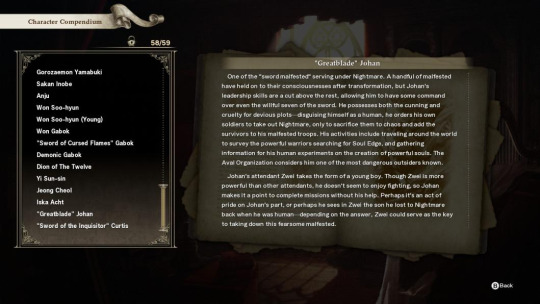
Zwei is mentioned here briefly in Durer's "Greatblade" bio
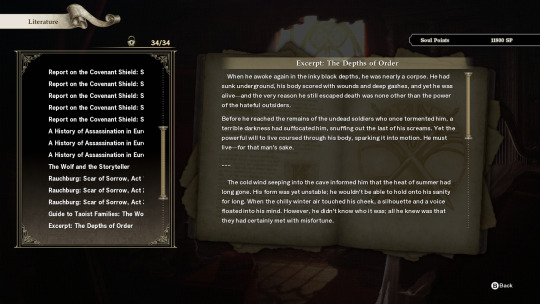


Though she is not named, you can read abour Curtis's first encounter with Vier here
There is currently no description of Sechs.
Acht, as we know, is partnered with Won “Sword of Cursed Flames” Gobak. Zwei is partnered with Johan “Greatblade” Durer. And Vier is partnered up with Curtis, otherwise known as “Sword of the Inquisitor.”
There are many doors that this explanation can open and many questions that it could raise. One question that I had while reading this and trying to make sense of it is “where did each of them get their vessels from to walk the earth?” I personally wasn’t sure I liked the idea of Zwei, a character I enjoy quite a bit, possessing a dead body or anything equally as morbid. So I took time to research Iska Farkas. And it turned out that Iska Farkas has quite the experience with creating homunculi, and he even used one to resurrect his sister. With the idea that Legends potentially only happened in Siegfried’s head, it is hard to know what would and wouldn’t be canon. However, I think it would make sense if each soul was given a homunculus in order to become a physical being.
Another question I had was what this would all mean for Zwei going forward? Surely with this complete and total rewrite of his background, he will more or less be a shadow of the character he was in the old timeline, right? Well based on some information we are given in the Soulcalibur 6 character compendium, I believe that not only will Zwei still receive his wolf-spirit Ein, but they will actually be giving us a compelling explanation for what, or who, Ein is.
Soulcalibur 5’s artbook did sort of address what Ein was

but it more or less just said that Zwei didn’t know where he came from or why he decided to try and help Zwei in his time of need. Ein’s origin was left completely up in the air. But now fast forward to Soulcalibur 6. I believe we are actually given a description in the character compendium that matches Ein.
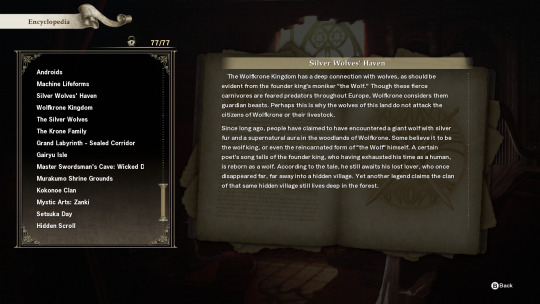
This description of The Wolf, Hilde’s ancestor, physically matches what we know Ein looks like. And if we can all recall from Hilde’s soul chronicle, Hilde grew up knowing Durer, and Durer is Zwei’s partner. We can see that the groundwork is already set, especially if you consider that this could potentially mean that Zwei has already spent a great deal of time in Wolfkrone, which is where The Wolf’s spirit has been allegedly spotted.
But what does this have to do with Iska Farkas? Well we have established already that ALL the shepherds when combined into one consciousness make up Iska Farkas. Meaning that, just like Iska Acht is one-seventh of Farkas’s identity, so is Zwei. Iska Farkas was a character said to be from Hungary. And if you translate the name Farkas from Hungarian into English, you will see that Farkas means wolf. Not to mention that in Acht’s bio, we are given confirmation that there is no shepherd who is called Ein, which is the German word for “one”. The shepherds start at Zwei, the German word for “two”. Even before we have had a chance to meet our new timeline version of Zwei, we already can see that he is surrounded by wolf motifs and wolf imagery.
This is all speculation. But as we could see, this information about Iska Farkas that hadn’t really been considered before opens up a vast array of possibilities and questions that we are all very interested in getting the answers to. I hope that everything I had to say makes sense and helped you all to understand the story a little better. I am excited to hear what different directions people think the story will take now after having discussed this.
#soulcalibur#soul calibur#just me being jobless with my thumbtacks and red string dont mind me#this is a modified version of a script i gave someone for a youtube video but i feel like we could#have more interesting conversations about it here#zwei#z.w.e.i.#acht#iska acht#iska farkas
8 notes
·
View notes
Text
The name Frantz Fanon has become inseparable from the history of decolonization. It is almost impossible to speak of anti-colonial violence or the failings of postcolonial elites without referring to the figure who inspired generations of activists to revolt against colonialism. Since the publication of his seminal work, The Wretched of the Earth, in 1961, Fanon has been idealized by generations of activists in the global south and beyond. For them, the Black Martinican and Frenchman who devoted himself to Algerian independence is the fearless and uncompromising prophet of revolution.
The subtitle of Adam Shatz’s new biography, The Rebel’s Clinic: The Revolutionary Lives of Frantz Fanon, suggests that his life was not so simple. Shatz, the U.S. editor for the London Review of Books, is an expert guide through the thicket of Fanon-lore that has emerged since his death in 1961, and his book offers a compelling account of Fanon’s transformation from a medical student into a global icon of anti-colonial revolution.
But The Rebel’s Clinic tells another, more tragic story, too: the tale of a young Black man from the French colonies who never really belonged anywhere, no matter how closely he identified with a nation or cause. Despite his deep attachment to Algeria, he could never really embody the Algerian revolution, as hagiographic accounts of his life have suggested. His life and body of work were too complicated to be branded in this way. Although Fanon was a remarkable thinker, he could be conflicted and even contradictory, and simplifying him only simplifies the difficult and often fraught work that must go into anti-colonial movements.
The first words a young Fanon learned to spell were “Je suis français.” As a child in Fort-de-France, the capital of the French colony of Martinique, in the 1920s and ’30s, he enjoyed the privileges of a typical bourgeois family: servants, piano lessons, and a weekend home outside the city. This was not uncommon for Antillean évolués, or assimilated colonial subjects whose European education let them rise up the colonial hierarchy. Like many of their class, the Fanons looked down on the “nègres” from France’s African colonies, who they believed weren’t really French.
Fanon’s parents identified so deeply with the French Republic that they behaved “more French than the French,” Shatz writes. As for Fanon, whose father was largely absent, Shatz recounts that he would collect several adoptive fathers in his short life but the “symbolic father represented by France” was by far the most important. Fanon strongly believed in the universal values of the republic: liberty, equality, and fraternity.
It was not until Fanon joined the Free French Forces in World War II that his faith in European civilization was shaken. In the army, he witnessed the French generals’ racism; the rigid separation between white, Antillean, and African soldiers; and the horrors of trench warfare. “Yet the incident that seems to have hurt him most,” Shatz writes, “was returning to Toulon [in southern France], during the celebrations marking the liberation of France, and finding that no Frenchwoman was willing to share a dance with him.” Though Fanon had risked his life for France, it would never truly accept him, and he never recovered from the rejection he experienced when he finally arrived in the métropole.
After the war, he studied medicine in Lyon, a city Shatz describes as “notorious for its suspicion of outsiders,” and eventually practiced as a psychiatrist there. His first book, Black Skin, White Masks (1952), grew out of a period of intense frustration and suffering. He dictated the book to his fiancée, Josie, in a burst of anger and creativity. (Fanon never typed anything himself.) It was his reckoning with a city, and a country, that he was beginning to despise—an attempt to make sense of what he described as the “lived experience” of Black men in white society. The desire to “become” white, he concluded, alienated racialized people from themselves, and assimilation constrained their freedom. Today, the book is celebrated as a foundational text in the study of Blackness and of alienation. But at the time, few readers appreciated or understood Fanon’s methodology—a synthesis of psychiatry, psychoanalysis, memoir, and social theory.
As Fanon’s awareness of the appalling situation of Algerians in France grew, he gradually lost “interest in the psychological dilemmas of middle-class people of color like himself,” Shatz writes. His psychiatric study of the “North African syndrome”—a mysterious illness that plagued France’s Algerian population—was a turning point. Algerians kept going to French doctors saying they were in pain but without clear physical symptoms. Fanon discovered that their pain couldn’t simply be dismissed as “imaginary,” as most French doctors had done. The racism of French society was making Algerians sick, he believed, and their ailments could only be treated by addressing this uncomfortable truth. For Fanon, mental illness could never be divorced from social conditions. He considered himself an activist and, Shatz writes, “approached psychiatry as if it were an extension of politics by other means.”
The Rebel’s Clinic is at its best when Shatz describes Fanon’s early efforts to develop an anti-colonial psychiatry. In 1953, Fanon was hired as the director of the French-run Blida-Joinville Psychiatric Hospital in Algeria. His time there opened his eyes to the brutality of colonialism, and under his guidance, the hospital transformed into a center for experiments in social therapy. Initially, the Algerian Muslim patients regarded Fanon with suspicion. To them, his cultural attitudes represented those of France. But, as Shatz writes, Fanon had a plan:
Working with a team of Muslim nurses, he created a café maure, a traditional Moorish café where men drink coffee and play cards, and later an “Oriental salon” for the hospital’s small group of female Muslim patients. Muslim musicians and storytellers came to perform; Muslim festivals were celebrated; and, for the first time in the hospital’s history, the mufti of Blida paid a visit during the breaking of the Ramadan fast.
French colonialism dehumanized Algerians by destroying their culture. By reminding them of their culture, Fanon hoped to help his patients assert a collective identity, which would give them the confidence to undergo a process of “disalienation” and fight back against the French.
At Blida, the Algerian nurses shared Fanon’s radical politics, and together, they secretly treated fighters with the National Liberation Front (FLN), which sought to overthrow French colonial rule. The hospital staff formed a militant health care collective that challenged coercive approaches to psychiatry. For them, Blida wasn’t an isolated institution where patients were locked away to recover; rather, their work in the hospital was part of the struggle waged outside its grounds. Fanon and his staff even introduced day hospitalization so patients could maintain ties to their social environment.
In Shatz’s view, Fanon’s dedication to health care was perhaps his most important contribution to the Algerian revolution. (He never engaged in active combat during the war.) Providing health care remained a priority for the FLN throughout the years of fighting.
After the French discovered Fanon was secretly an FLN member, he fled to Tunis, Tunisia’s capital, where the FLN’s provisional government would be based, and took up a new role in the movement: He still treated patients traumatized by war but also worked as a propagandist championing the FLN’s armed struggle. Although his democratic vision of a people-led revolution clashed with the FLN’s authoritarianism, he dutifully justified its policies to an international audience. As Shatz points out, the strategic use of the phrase “we Algerians” in his articles for El Moudjahid, the FLN’s French-language newspaper, was a way to prove how closely he identified with the Algerian cause. His writing and speeches during this period helped create the myth of Fanon as a leader of the revolution.
The Rebel’s Clinic pushes back against this mythologizing. Fanon’s identification with Algeria grew as the war intensified, but he was an outsider: He spoke neither Arabic nor Berber, was not Muslim, and had come to Algeria as a representative of the colonial government. And while FLN leaders respected Fanon’s medical work, they never quite trusted him. Even as they presented him as a spokesperson of the movement to international audiences, Fanon had little influence over its direction and politics. When he learned that his close friend, key FLN figure Abane Ramdane, had been assassinated by another FLN faction, he was devastated. But he never questioned the leadership’s decision and refused to break ranks. Fanon had become a captive of the revolution he’d hoped to ignite.
Shatz notes that A Dying Colonialism, Fanon’s first book about Algeria, “reads like a record of revolutionary hopes soon to be dashed.” Written in Tunis in 1959, the book gives an idealized account of Algerian liberation, pieced together from his memories of the war’s early stages. But the social changes he praised—the emancipation of Algerian women (the subject of his famous essay “Algeria Unveiled”), the dissolution of classes, and the turn toward secularism—were never realized in practice.
Fanon never really understood his adopted home, especially when it came to religion. His belief in the revolution was so absolute that he failed to consider how the conservative, Islamist forces in the FLN might shape its outcome. Like Ramdane, Fanon argued for an independent Algeria that would welcome everyone who renounced their colonial privilege. He believed that the roles of “settler” and “native” ascribed by colonialism were never fixed. After independence, he hoped, Algerians would finally be able to “discover the man behind the colonizer,” as sympathetic Europeans too became equal citizens in a secular Algeria. But, as Shatz argues, these ideals clashed with the FLN leadership’s more narrowly Arab-Islamic vision of post-independence Algeria. Even the people Fanon had hoped would lead the revolution—Algeria’s poor peasants—embraced the FLN’s social conservatism.
To avoid conflict over its social policies, the provisional government promoted secular leftists to diplomatic positions in West Africa. In 1960, Fanon was stationed in Accra, and he soon came to share the Pan-Africanist views of Ghana’s president, Kwame Nkrumah, who insisted that all Africans would be united by their common struggle against colonialism. Fanon was convinced that Algeria would lead the rest of the continent toward liberation. But ironically, his influence in the FLN waned as he became more famous, and he “would have little success in ‘Algerianizing’ the strategies of African liberation struggles,” Shatz writes.
Fanon wanted to convince African anti-colonial movements to engage in guerrilla warfare, as the FLN had done. But their leaders often chose peaceful organizing or negotiations as the preferred route to independence. Fanon rightly feared that this approach to decolonization would enable former colonial powers to “recolonize” Africa through favorable arrangements with compliant leaders. His evisceration of Africa’s post-independence bourgeoisie in The Wretched of the Earth was inspired by his work as a diplomat.
Fanon was not always prophetic about the future of African politics. As Shatz points out, he underestimated the impact of the Cold War on Africa, insisting that it was merely “a distraction from the larger drama of decolonization and the rise of the Third World.” Two of Fanon’s closest friends and political allies in sub-Saharan Africa—soon-to-be Congolese Prime Minister Patrice Lumumba and the Cameroonian communist Félix-Roland Moumié—would be assassinated in the early 1960s because of their leftist politics. (Fanon had himself survived an attempt on his life in Rome in 1959.) Another close friend, the Angolan Holden Roberto, turned out to be a CIA asset and was secretly working to undermine Lumumba, whom he described as a communist “puppet.”
The process of decolonization, then, was not only a struggle between anti-colonial movements and colonial powers but part of the global struggle among competing ideologies. As much as he tried to ignore it, the Cold War found Fanon, too. Following an FLN expedition to Mali to assess the possibility of a weapons corridor to southern Algeria, Fanon fell ill and was diagnosed with leukemia. In a show of “friendship” to the FLN, the CIA agreed to bring Fanon to the United States—a place he’d previously dismissed as “the country of lynchers”—for treatment. Fanon died in a hospital in Maryland in December 1961. A few months later, Algeria achieved its independence.
Today, various activist causes, from Black Lives Matter to the Palestinian solidarity movement, have again embraced Fanon as a leading thinker. But his work has also found favor with scholars in disciplines such as psychiatry, psychoanalysis, and philosophy. In her recent interviews with Shatz, Fanon’s former secretary, Marie-Jeanne Manuellan, mentioned that she didn’t like him “to be chopped into little pieces.” Manuellan insisted that Fanon’s “pamphlets” were “texts written in the service of a political movement, not works of philosophical reflection,” Shatz writes.
Yet this is precisely what the canonization of Fanon has too often done. Fanon’s psychiatric and philosophical writings merit renewed attention. But this attention should not come at the cost of gaining a fuller understanding of how Fanon’s anti-colonial thought builds on his earlier psychiatric studies or of his fraught and often conflicted role in the revolution. The Rebel’s Clinic is careful not to reduce Fanon’s life and thought to a single interpretation. Fanon’s advocacy of anti-colonial violence cannot be separated from his belief in a revolutionary humanism. For him, violence was a necessary step in the struggle—a kind of “shock therapy” that would restore confidence to the colonized mind. But he also understood that the traumas of the war would not disappear at independence.
Shatz does suggest that one aspect of Fanon’s work is most relevant for our world today. Fanon knew very well that the struggle for decolonization was only a first step toward the birth of a new humanity, which would allow both colonizer and colonized to finally be free. He never described exactly what the social revolution he so strongly believed in would look like, but he was certain that the poor and oppressed of the “Third World,” not liberals or the European working classes, would lead the way. This anti-colonial and universalist Fanon is, perhaps, the one Shatz would like us to remember most.
12 notes
·
View notes
Text
Okay so I've been reading Red White and Royal Blue the novel and I'm thrilled to report it IS a different experience.
I saw the movie first? Phenomenal. On its own merit, as it's own experience, hands down best movie I saw this year. And definitely one of my fave romances I've seen (along with But I'm a Cheerleader).
This book? I can see already the impression that the movie simplified, softened, and changed some things in some areas. I think the movie, based on the 100 pages I've read so far of the book, changed enough that the movie does read as different characters In The Spirit and Themes of the book. Movie Alex is like book Alex, but almost another universe of him (like Guardian Zhao Yunlan in chinese drama versus book). Henry so far reads as similar in novel to movie, but movie did not have the time to do his traits with as much nuance. Which like. I think many movie differences were made for making a concise movie length story, a slightly more on the nose story to make the main points hit audiences strong enough to get understood clearly, and to of course emphasize more of the points the movie script aimed to emphasize and focus on in that limited time.
I'm reading the book now. And delighted to say Alex's family is handled with much more nuance. Also the book is fascinating in my experience as the first fictional novel I've ever read with so much clear real life applicable casual political references. I've seen biographies and nonfiction books do this on occasion, but it's fascinating seeing a fiction novel do it. I think it's a brave and higher risk writing choice as it's both individual to author and even more so using the political as a reflection of characters, drawing concrete lines by which to judge them in the sort of terrifying "this stuff effects people's lives" way real public figures get judged. Fitting in seeing Alex and June as Public figures, but also risking as a writer your characters No Longer conforming to the "everyday man" character everyone can project onto. Bella in Twilight has a lot of Mormon related cultural experiences bleeding into how she's written, but the author didn't make her overly Mormon with a church she belonged to and overt commentary on that religious view of the world in relation to say Vampires and marriage and sex. (There are books that do tho, I've read realistic fiction like The Poisonwood Bible about missionaries which very much heavily directly discussed real religions and those beliefs effecting people's personalities and actions in the story). It's interesting to see a Romance novel go for the specific at the risk of making those characters less easy to "project" onto. I prefer this choice, the same way Fingersmith by Sarah Waters is one of my favorite romances and those two fucked up women sure aren't "everyday" average joes you can project onto. This writing choice makes the points made in Red White and Royal Blue a lot more pointed qnd with a lot more to back them up. It's interesting seeing. The movie definitely toned down things in this regard (while still including more overt politics than I've seen in many romances except say But I'm a Cheerleader with its brazen condemnation of conversion camps). I can see how the movie flattened Ellen to make her a more likable less flawed person, because it's easier to sell a loving mom President in a movie under limited time to give her no Significant Flaws. But the book has time to hammer her stubbornness has destroyed personal things, at times clashes strongly with her son who turned out so much like her (and is partly why June does not click with mom the way Alex does), how moms choices and personality were not necessarily good for June and Alex at times, how Alex clearly learned to be a workaholic qnd avoid his personal pain by being stubborn like his mom. She's someone he admires, and someone he emulates both good and bad, and someone he's infuriated that has those stubborn workaholic realistic traits he's copied. But a movie doesn't have time for the good and the bad, the realism of the damage all parents in some ways cause even if unintentional, the realism of what going through divorce means for each partner and their kids. The movie doesn't divorce them, because it's easier to sell a married mom as a positive (like the book lol comments on). I get it.
Anyway more on Alex's family. I deeply appreciate they're flawed and realistic in the book. In the movie, in its own interesting way I found it interesting to watch Alex (raised primarily with secure attachments and open loving secure support from both parents Together) with Henry who did NOT have the same emotional relationships foundation from family (only his Sister being a Safe Enough relationship to trust to emotionally rely on). Versus now the book, seeing they actually both can bond over these imperfect situations of their families. Which in its way, is realistic to many people who've found love. It gives them more to see understanding with each other in. And in Alex's case in the book in particular, his background details give us more about who he is qnd what drives him. The movie had to simplify those elements of him qnd Harry outside romance in order to tell a timely romance story. The book has more space for those individual character stories of trauma and pain and growth and connection.
30 notes
·
View notes
Text
I posted an analysis of the 1.4 update of Honkai Star Rail, but I deleted because I felt I was unfair to Topaz, by calling her “Gordon Gekko as a waifu” – in some aspects she’s actually more annoying. But now that I finished, I want to share a few thoughts on the 1.4 story, that’s essentially the story of an economic mission and how Topaz is “if neoliberal why hot”.
There will be a lot of politcses, because it’s essentially the story of Space IMF going to an underdeveloped country, it would only be more political if it was written by Kojima himself, so placing under “Read more”.
I couldn’t help but to find it hilarious how the writers at miHoyo decided to write an entire story involving an economic mission. It should be noted that the IPC is more than a corporation; it seems to hold the monopoly of interstellar trade. I don’t remember seeing other corporations doing that, but I have the feeling that, while you can argue that scale of operations and the costs makes it a natural monopoly, the writers decided to go for the IPC monopoly to simplify the story.
Having this in mind, it should be noted that when a corporation grows too large, it stops being just a corporation. Due to the power accumulated by the expansion of its finance needing to be defended at all costs, it starts gaining other traits, including becoming essentially a government. In HSR, the IPC in 1.4 takes the role of supranational organizations, such as the International Monetary Fund (IMF) and the World Bank. Both organizations were founded in the aftermath of WW2 to help reconstruct Europe. The World Bank, however, changed its role to promote development in the Global South (anachronic use of the term, because this term wasn’t used in the 1940s) to not compete with the IMF’s role in reconstruction.
The people who first joined these organizations were actually dedicate and passionate about these causes. Studying the history and the biographies of the people there, one thing that critics have to understand it’s not just about the money, neither it’s just about the power. These people really really believed that submission to whatever they said was the right way to take out a country out of poverty was the best thing possible. Topaz’s attitude isn’t an anomaly or something to make her waifuable, but it’s common in the biographies of these economists – they thought they could bring their mathematical models, their expertise and their willpower to make every country they went to a better one. The stuff reached a point that some said it’d better to give them “xenos rights”, the right to do every change whatever it takes, ignoring the natives’ opinions and rights, all this in order to implement the necessary changes for the greater good.
Needless to say, whenever they went, failure followed them. Many times they didn’t understand local politics and customs; the models were so good on paper, but useless in reality; there was no guarantee local leaders would follow blindly their plans. There are cases that the World Bank just used the same strategy report for development, sometimes forgetting to change the name of the country, so leaving them with the plan for a previous country.
The result was countries in debt and they require to acquire debt to pay previous debts, compromise with austerity reforms that worked absolutely nothing, but let the conservative parties of all participant countries happy because it entrenched their power. When Himeko mentioned the 63% success rate, you know HSR is a work of fiction, because there’s really no statistic for that real life, but ask anyone who studies this and you’ll know it’s low, to say the least.
In fact, interests were all that mattered, and their economic missionaries were very useful in that because they were true believers, like Topaz. Again, you have no idea of how many people in the history of economic thought sincerely believed that the free market would solve everything, that would receive with enthusiasm Topaz’s plan of belobogians becoming indentured servants to the IPC.
The game goes to great lengths to show that Topaz is a good girl at heart, that loves animals and cute things (because it’s a gacha in the end of the day), but it’s clear she’s so indoctrinated in the IPC ideology that efficiency is the best thing ever, no matter the costs; thus, she’s willing to claim “xenos rights” and pass through the people she’s trying to help for a misguided idea of what’s better for them (also Bronya showed to be one of the best characters of the game, with how she managed to disarm Topaz’s arguments with compassion; and Topaz accepts that). That’s why I felt it was unfair to call her waifu Gordon Gekko because he’s absolutely not a good person. But, at the same time, her condition of true believer is annoying to me (that’s why she goes to my F-tier).
In real life, economic missions don’t have a high rate of success and, even when they might succeed, it might not be for the reasons they believe to be (the hiding hand principle). There’s also the fact that entities like the IMF did try to call out and apply sanctions on Western European and the US for violating parts of its chart or not paying loans, but they didn’t succeed because how are they going to do that against their bosses? So, they have to compensate on underdeveloped countries, to show the system “works”; this not counting the times they become departments of the American government.
In the history of economic development, the most successful strategy is simple: lend and forget. That was the point of the Marshall Plan, that helped to restore the Western European economies and to avoid the debt problems that led to WW2; that was the point of the American investment in Japan, in order to support the war effort in the Korean War; that’s how South Korea became developed, because it supported the US in the Vietnam War (by sending troops and having the chaebols procure assets for the American military); even the Soviet Union did that, with Cuba – in fact, all these development projects were an offshoot of the Cold War, through economic means. It also caused deindustrialization in the US, look at Detroit. If you lived in Latin America, Africa or South Asia (not including the Middle East here, because they received the dollars from the West’s unquenchable thirst for oil, creating today’s localized cold war between the Gulf’s petrostates), you’d have to deal with lower quality loans (that was the source of many financial crises in Latin America) or none at all, while dealing with the offshoots of the Cold War in more…traditional ways, wars, terrorism, coups et al.
It's also relevant to mention that it’s a game developed by the Chinese, because China has always rejected shock therapy proposed by organizations like the IMF after the economic opening and adopted a strategy to develop a national industry (essentially copying the Japanese strategy after WW2). They offer a different perspective on issues of development in fiction (like, in Arknights, the Kazimierz stories aren’t about Horse Poland, but about Shenzen and other similarly developed cities in China).
So Topaz’s letter to Bronya feels like an attempt to make her sympathetic (because, again, we’re in a gacha). In-universe, we have only her words and Himeko’s information to say that it worked (and omitting the rate of success was another indication that she was an economic missionary with no idea of what Belobog really needed). But, from her words, we hear that her planet exported products to other ones and overexerted itself. And remember: which organization has the monopoly of interstellar travel and was probably in charge of said polluting factories or had a very close relationship with them?
#honkai star rail#i could've talked more#but its already a thousand words#economic development is bull#its so freaking easy#on paper#but its not in reality#i could've been more critical btw
9 notes
·
View notes
Note
hi! you seem quite knowledgeable, how different is each mcr biography? I'm thinking of getting myself a christmas present but I'm not sure which one :)
not the life it seems by tom bryant is the best one by far! the only one they actually approved of (though it's still unofficial and they didn't have any input into it besides frank doing interviews for it) bc he'd known them for a long time and interviewed them a lot over the years so they trusted him to do a decent job. it's not quite exhaustive and he does simplify certain things for artistic effect but what can you expect really. all in all it's very good and honestly a bit hard to get through in places because it's upsetting skdjfjd 😩😩. he does have a very blatant frank bias too but hey what music journalist doesn't lol
47 notes
·
View notes